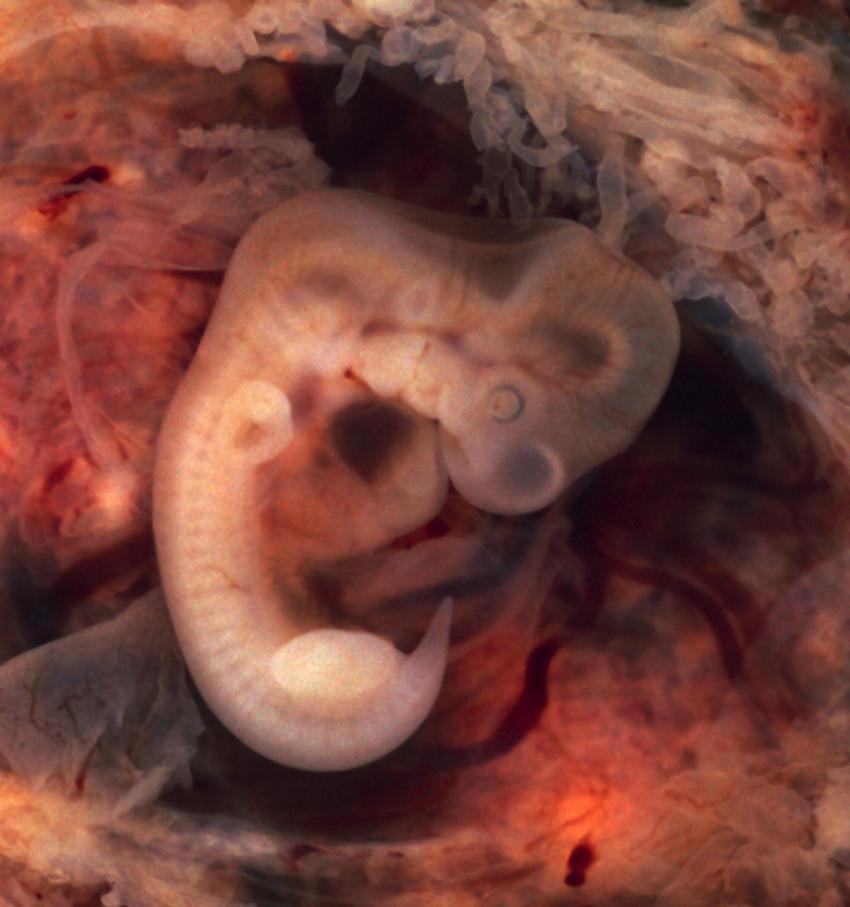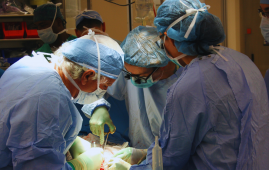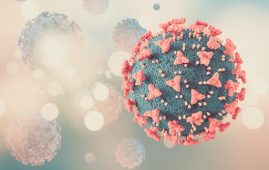

For women hoping to achieve a pregnancy using freshly retrieved donor eggs, a new retrospective study led by researchers from Brigham and Women’s Hospital may provide important insight. Brigham senior author Janis H. Fox, MD, had observed that when freshly retrieved donor eggs were used, pregnancy rates were higher for fresh compared to frozen embryo transfers. Fox and her colleagues were intrigued by this observation. The team set out to scientifically determine if this observation would be replicated in a larger sample of recipients. Leveraging national data from the Society for Assisted Reproductive Technology (SART), the Brigham researchers found that, in cycles using freshly retrieved donor eggs, fresh embryo transfers were indeed associated with significantly higher live birth rates compared to frozen embryo transfers. The team’s findings are published in JAMA.
“In cycles using one’s own eggs, recent randomized controlled trials comparing pregnancy rates between fresh and frozen embryo transfers have suggested that pregnancy rates are equivalent or possibly higher following frozen embryo transfers,” said corresponding author Iris Insogna, MD, MBE, a fellow in Reproductive Endocrinology and Infertility at the Brigham. “Our study suggests the opposite in cycles using freshly retrieved donor eggs. In fresh donor egg recipients, pregnancy rates were actually higher following fresh embryo transfers compared to frozen embryo transfers.”
The use of donor eggs has been steadily increasing in the United States since the first American child was born from egg donation in 1984. Since 2007, there has been a notable rise in the use of frozen rather than fresh embryo transfers in donor egg cycles. This is in part due to greater interest in preimplantation genetic testing to ensure the embryo has the correct number of chromosomes (a process that necessitates freezing the embryo while awaiting the results), and also because fresh donor embryo transfers present unique logistical challenges in that they require synchronizing the recipient’s uterine lining with the egg donor’s stimulation.
To determine whether fresh embryos derived from freshly retrieved donor eggs offered any benefit compared to frozen embryos, the Brigham team used data from SART, which collects cycle information from 370 in vitro fertilization clinics in the U.S., accounting for more than 95 percent of all assisted reproduction volume nationwide. The current study includes more than 33,000 recipients.
“The extensive data set that SART makes available for research and analysis is an incredibly valuable resource to answer questions such as ours,” said Fox, an attending reproductive endocrinologist in the Brigham’s Center for Infertility and Reproductive Surgery and an assistant professor at Harvard Medical School.
The team found that fresh embryos derived from fresh donor eggs were associated with significantly higher live birth and clinical pregnancy rates, while miscarriage rates were the same between both groups. For fresh embryos, the live birth rate was 56.6 percent compared to 44 percent for frozen embryos. Clinical pregnancy rates were 66.7 percent for fresh embryos compared to 54.2 percent for frozen. Interestingly, the Brigham team found that live birth rates remained higher following the transfer of fresh embryos, even when compared to the transfer of frozen embryos that had undergone preimplantation genetic testing and were known to contain the normal number of chromosomes.
The authors note this is a retrospective study so can only demonstrate associations between exposures and outcomes. Though the SART database is extensive, some information is missing, including the age and demographic information of some anonymous donors included in the study.
While fresh embryos derived from fresh donor eggs conferred a statistically significant and clinically meaningful higher rate of live births compared to frozen embryos, the authors emphasize that live birth rates were high for both groups.
“The transfer of either fresh or frozen embryos derived from freshly retrieved donor eggs provides an excellent chance of achieving a pregnancy,” said Insogna.
Fox adds, “For women contemplating achieving a pregnancy using freshly retrieved donor eggs, as well as for their physicians, we feel this study provides valuable guidance.
more recommended stories
 Safer Allogeneic Stem Cell Transplants with Treg Therapy
Safer Allogeneic Stem Cell Transplants with Treg TherapyA new preclinical study from the.
 Autoimmune Disorders: ADA2 as a Therapeutic Target
Autoimmune Disorders: ADA2 as a Therapeutic TargetAdenosine deaminase 2 (ADA2) has emerged.
 Kaempferol: A Breakthrough in Allergy Management
Kaempferol: A Breakthrough in Allergy ManagementKaempferol, a dietary flavonoid found in.
 Early Milk Cereal Drinks May Spur Infant Weight Gain
Early Milk Cereal Drinks May Spur Infant Weight GainNew research published in Acta Paediatrica.
 TaVNS: A Breakthrough for Chronic Insomnia Treatment
TaVNS: A Breakthrough for Chronic Insomnia TreatmentA recent study conducted by the.
 First-of-Its-Kind Gene-Edited Pig Kidney: Towana’s New Life
First-of-Its-Kind Gene-Edited Pig Kidney: Towana’s New LifeSurgeons at NYU Langone Health have.
 Just-in-Time Training Improves Success & Patient Safety
Just-in-Time Training Improves Success & Patient SafetyA study published in The BMJ.
 ChatGPT Excels in Medical Summaries, Lacks Field-Specific Relevance
ChatGPT Excels in Medical Summaries, Lacks Field-Specific RelevanceIn a recent study published in.
 Study finds automated decision minimizes high-risk medicine combinations in ICU patients
Study finds automated decision minimizes high-risk medicine combinations in ICU patientsA multicenter study coordinated by Amsterdam.
 Study Discovers Connection Between Omicron Infection and Brain Structure Changes in Men
Study Discovers Connection Between Omicron Infection and Brain Structure Changes in MenA recent study in the JAMA.

Leave a Comment